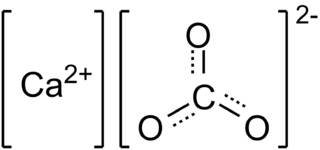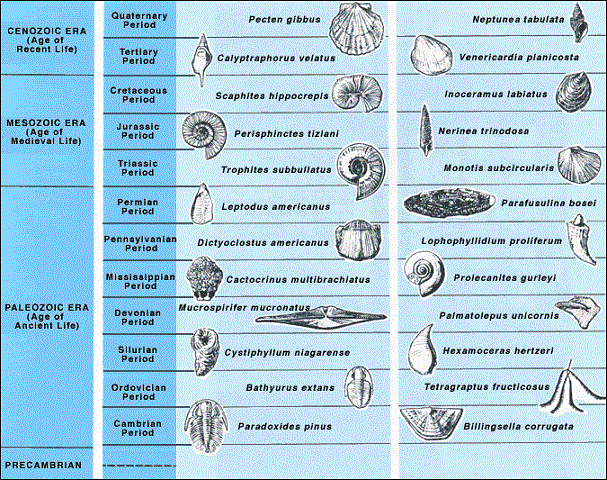
At the listed coordinates you will find bust of Josip Stolcer Slavenski, Croatian composer that was born in Cakovec. For this EarthCache we are interested for the plinth of this bust. The plinth of this bust was made from limestone, and limestone is type of sedimentary rock. This rock is formed during Cenomanian (from 100.5 to 93.9 million years ago) that represent oldest or earliest age of the Late Cretaceous epoch. Its origin is from Croatian region of Istria. You can find some nice examples of rudist fossils within plinth at the listed coordinates.
Limestone
Limestone is categorized as sedimentary rock. Sedimentary rocks are one of three large groups of rocks, the other two are igneous and metamorphic. Sedimentary rocks are formed when different materials are deposited by different geological processes and accumulated either at the surface of Earth or within water. Accumulated material that forms sedimentary rocks is called sediment. Limestone is sedimentary rock that is mainly (more than 50%) built from calcium carbonate (CaCO3), particularly from its two crystal forms - calcite and aragonite.
CaCO3
 Source: Wikipedia
Source: Wikipedia
Majority of limestone form in shallow, calm and warm marine waters. Limestone represents 10% of all sedimentary rocks. There are different types of limestone and they can be formed by various processes. In general, if limestone is formed from calcium carbonate that came from various marine organisms (e.g. corals, forams, molluscs) then it is called biological limestone. Its biological origins could often be detected by the presence of fossils. Limestone can also be formed by direct precipitation of minerals from water and such limestone is called chemical limestone.
The main source of calcium carbonate in limestone that is used for plinth at the EarthCache location are rudist shells.
Rudists
Rudists are a group of marine molluscs with two shells or valves (bivalves) that existed from the Late Jurassic to the Late Cretaceous periods. Their valves were unequal and one of them were attached to the sea floor. They resided in shallow, calm and warm marine waters. During the time of dinosaurs reefs were mainly built by rudists, not by corals. They went extinct at the end of the Cretaceous period during the Cretaceous–Paleogene extinction event, the same mass extinction event that wiped out dinosaurs.
Rudists
 Source: James L. Wilson, (1975), Geologic History in Carbonate Facies, New York: Springer.
Source: James L. Wilson, (1975), Geologic History in Carbonate Facies, New York: Springer.
Rudists, as well as many other marine organisms, developed the ability to use calcium carbonate from marine water and to build their protective shells from that material. When these organisms died, their shells (built from calcium carbonate) were accumulated on the seafloor. Those shell sediments over many years of accumulation are transformed into sedimentary rock limestone by binding initial rudist shell material together with chemically precipitated calcium carbonate cement. Rudist fossils are often found in such rocks.
Fossils
Fossils are accidental by-products of life preserved in the geological record. They can be formed in all sorts of ways by the processes of nature. Life comes in a wide variety of forms and shapes and so therefore do fossils. Since each life-form can be fossilized in several different ways the variety found in fossils is amazing. Some fossils are used as index fossils and they are used to define and identify geologic periods of different sediments. Index fossils are also called guide fossils, indicator fossils or zone fossils.
Index Fossils
 Source: United States Geological Survey (usgs.gov)
Source: United States Geological Survey (usgs.gov)
Fossils are anything that provides evidence of life in past ages. That evidence of life in past ages can come in two general types. It can be either direct evidence or indirect evidence of past life.
Direct evidence of life are fossils of hard body parts of organisms. They can be fossilized bones or shells in case of animals. Or it can be fossilized wood or leaves in case of plants. In some cases, the entire organism can be fossilized, together with both soft and hard parts. Example of such fossils are insects trapped in amber or mammoths frozen in ice.
Indirect evidence of life are trace fossils. They are various footprints, trails, marks that were left by organisms and then fossilized. Coprolites (fossilized poo) is also one example of trace fossils. Another example of trace fossils are chemical fossils that represent organic compounds that survive in the form of oil, gas or bitumen.
Logging Tasks
To log this EarthCache answer the following questions:
1. Search the plinth and find at least one fossil. Describe the fossil and report its measures.
2. Based on your observation of fossil, what do you think: is this fossil direct evidence or indirect evidence of past life? Why?
3. Based on your observations, do you think this limestone is biological or chemical limestone? Why?
Send your answers through my profile at geocaching.com (through e-mail or message center) and NOT in a log. You don't have to wait for me to approve your answers. Once you send your answers feel free to log this EarthCache as found. If there are problems with your answers, I will contact you.
Sources
1. Fossils, Course Notes, EarthCache Academy.
2. Alecia M. Spooner, Geology for Dummies, Hoboken: Wiley Publishing, Inc., 2011.
3. Monica Price and Kevin Walsh, Rocks and Minerals, London: Dorling Kindersley, 2005.
4. Cyril Walker and David Ward, Fossils, London: Dorling Kindersley, 2000.
5. James L. Wilson, Geologic History in Carbonate Facies, New York: Springer, 1975.
6. Wikipedia.org

Na izlistanim koordinatama pronaći ćete bistu Josipa Štolcera Slavenskog, hrvatskog kompozitora koji je rođen u Čakovcu. Za ovaj EarthCache zanima nas postolje biste. Postolje biste je izrađeno od vapnenca koji je vrsta sedimentne stijene. Ova stijena je nastala tijekom Cenomanija (prije 100,5 do 93,9 milijuna godina) koji predstavlja najstarije doba Kasne Krede. Stijena je nastala na području Istre. Na površini postolja biste možete vidjeti lijepe primjerke fosila rudista.
Vapnenac
Vapnenac se kategorizira kao sedimentna stijena. Sedimentne stijene su jedna od tri velike skupine stijena. Druge dvije skupine su magmatske i metamorfne stijene. Sedimentne stijene nastaju kada se različiti materijali talože različitim geološkim procesima. Navedeni materijali se akumuliraju ili na površini Zemlje ili u vodi. Akumulirani materijal od kojega se stvaraju sedimentne stijene naziva se sediment. Vapnenac je sedimentna stijena koja je uglavnom (vise od 50%) građena od kalcijevog karbonata (CaCO3) i to konkretno od njegova dva kristalna oblika - kalcita i aragonita.
CaCO3
 Izvor: Wikipedia
Izvor: Wikipedia
Većina vapnenačkih stijena nastaje u plitkim, mirnim i toplim morima. Vapnenac cini oko 10% svih sedimentnih stijena. Postoje različite vrste vapnenaca koji mogu nastati različitim procesima. Općenito, ako je vapnenac nastao od kalcijevog karbonata koji potječe od različitih morskih organizama (npr. koralja, krednjaka, mekušaca) tada se takav vapnenac naziva biološki vapnenac. Biološko porijeklo takvog vapnenca se često može detektirati na temelju prisutnosti fosila. Vapnenac također može nastati direktnim taloženjem minerala iz vode. Takav vapnenac se naziva kemijski vapnenac.
Glavni izvor kalcijevog karbonata u vapnencu od kojega je izrađeno postolje na lokaciji EarthCachea su školjke rudista.
Rudisti
Rudisti su grupa morskih mekusaca s dvije školjke ili ljušture (bivalve) koja je postojala od perioda Gornje Jure do Gornje Krede. Njihove školjke su bile nejednake i jedna od njih je bila pričvršćena za morsko dno. Prebivali su u plitkim, mirnim i toplim morskim područjima. Tijekom vremena dinosaura grebeni su uglavnom bili građeni od rudista, a ne od koralja. Izumrli su na kraju perioda Krede tijekom Kredsko-tercijarskog masovnog izumiranja, istog masovnog izumiranja tijekom kojega su izumrli i dinosauri.
Rudisti
 Izvor: James L. Wilson, (1975), Geologic History in Carbonate Facies, New York: Springer.
Izvor: James L. Wilson, (1975), Geologic History in Carbonate Facies, New York: Springer.
Rudisti su, kao i mnogi drugi morski organizmi, razvili sposobnost iskorištavanja kalcijevog karbonata iz morske vode kako bi od tog materijala izgradili zaštitne oklope. Kada su ovi organizmi uginuli, njihove su se školjke (izgrađene od kalcijevog karbonata) akumulirale na morskom dnu. Tijekom mnogih godina ovi su se sedimenti školjaka transformirali u sedimentnu stijenu vapnenca povezujući inicijalni materijal rudistnih školjki zajedno s kemijski taloženim cementom kalcijevog karbonata. Fosili rudista se često mogu naći u takvim stijenama.
Fosili
Fosili su slučajni nusproizvodi života očuvani u geološkom materijalu. Fosili mogu nastati na različite načine pomoću prirodnih procesa. Život se javlja u raznim oblicima, pa se stoga i fosili javljaju u različitima oblicima. S obzirom da se svaki oblik života može fosilizirati na nekoliko načina, među fosilima postoji nevjerojatna raznolikost. Neki fosili se koriste kao indeksni fosili, te se pritom koriste za definiranje i identificiranje geoloških razdoblja različitih sedimenata. Indeksni fosili se još nazivaju i indikatorski fosili ili zonski fosili.
Indeksni fosili
 Izvor: United States Geological Survey (usgs.gov)
Izvor: United States Geological Survey (usgs.gov)
Fosili su sve ono što dokazuje život u prošlim vremenima. Taj se dokaz prošlog života javlja u dva oblika. On može biti izravan ili neizravan.
Izravan dokaz života su fosili koje čine čvrsti dijelovi organizama. U slučaju životinja, to mogu biti fosilizirane kosti ili školjke. Ili, kada su u pitanju biljke, to može biti fosilizirano drvo ili lišće. U nekim slučajevima, fosiliziran može biti i cijeli organizam, i njegovi meki i njegovi čvrsti dijelovi. Primjeri takvih fosila su insekti zarobljeni u jantaru ili mamuti smrznuti u ledu.
Neizravan dokaz života su fosilni tragovi. To su različiti otisci stopala, repova, tragova, koje su organizmi ostavljali, a zatim su fosilizirani. Koproliti (fosilizirana kakica) su također jedan primjer fosilnih tragova. Još jedan primjer fosilnih tragova predstavljaju i kemijski fosili. Kemijski fosili su organski spojevi koji su se očuvali u obliku nafte, plina ili bitumena.
Zadaci za logiranje
Kako biste logirali ovaj EarthCache odgovorite na sljedeća pitanja:
1. Pretražite postolje biste i pronađite bar jedan fosil. Opišite pronađeni fosil i izvjestite o njegovim mjerama.
2. Na temelju promatranja pronađenog fosila, što mislite: je li ovaj fosil izravan ili neizravan dokaz o prošlom životu? Zašto?
3. Na temelju uočenog, je li ovaj vapnenac biološki ili kemijski vapnenac? Zašto?
Odgovore pošaljite preko mog profila na geocaching.com, a NE u Vašem logu! Ne morate čekati na moje potvrđivanje Vaših odgovora. Jednom kada pošaljete Vaše odgovore slobodno logirajte pronalazak ovog EarthCachea. Ako Vaši odgovori budu pogrešni ja ću kontaktirati Vas.
Izvori
1. Fossils, Course Notes, EarthCache Academy.
2. Alecia M. Spooner, Geology for Dummies, Hoboken: Wiley Publishing, Inc., 2011.
3. Monica Price and Kevin Walsh, Rocks and Minerals, London: Dorling Kindersley, 2005.
4. Cyril Walker and David Ward, Fossils, London: Dorling Kindersley, 2000.
5. James L. Wilson, Geologic History in Carbonate Facies, New York: Springer, 1975.
6. Wikipedia.org